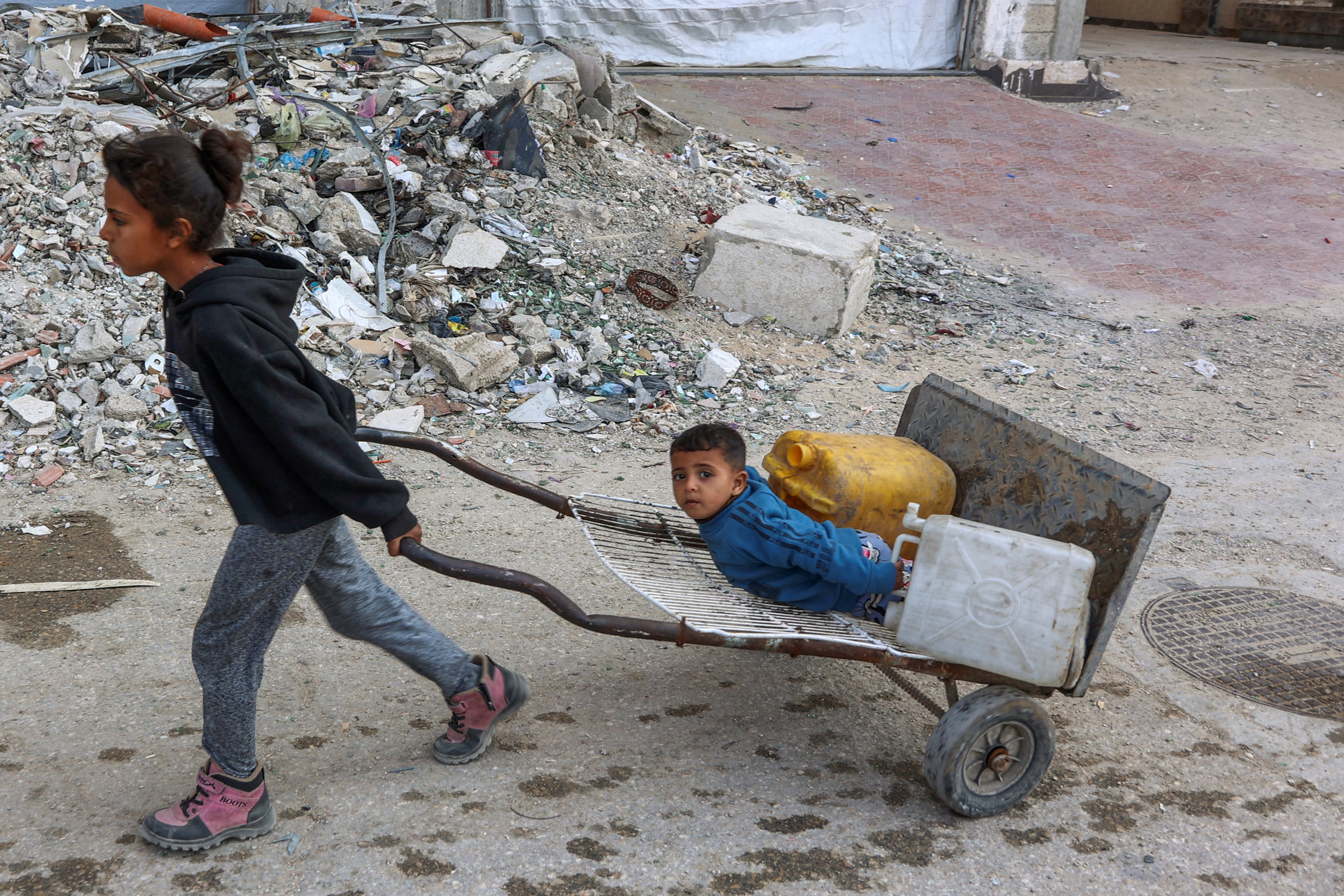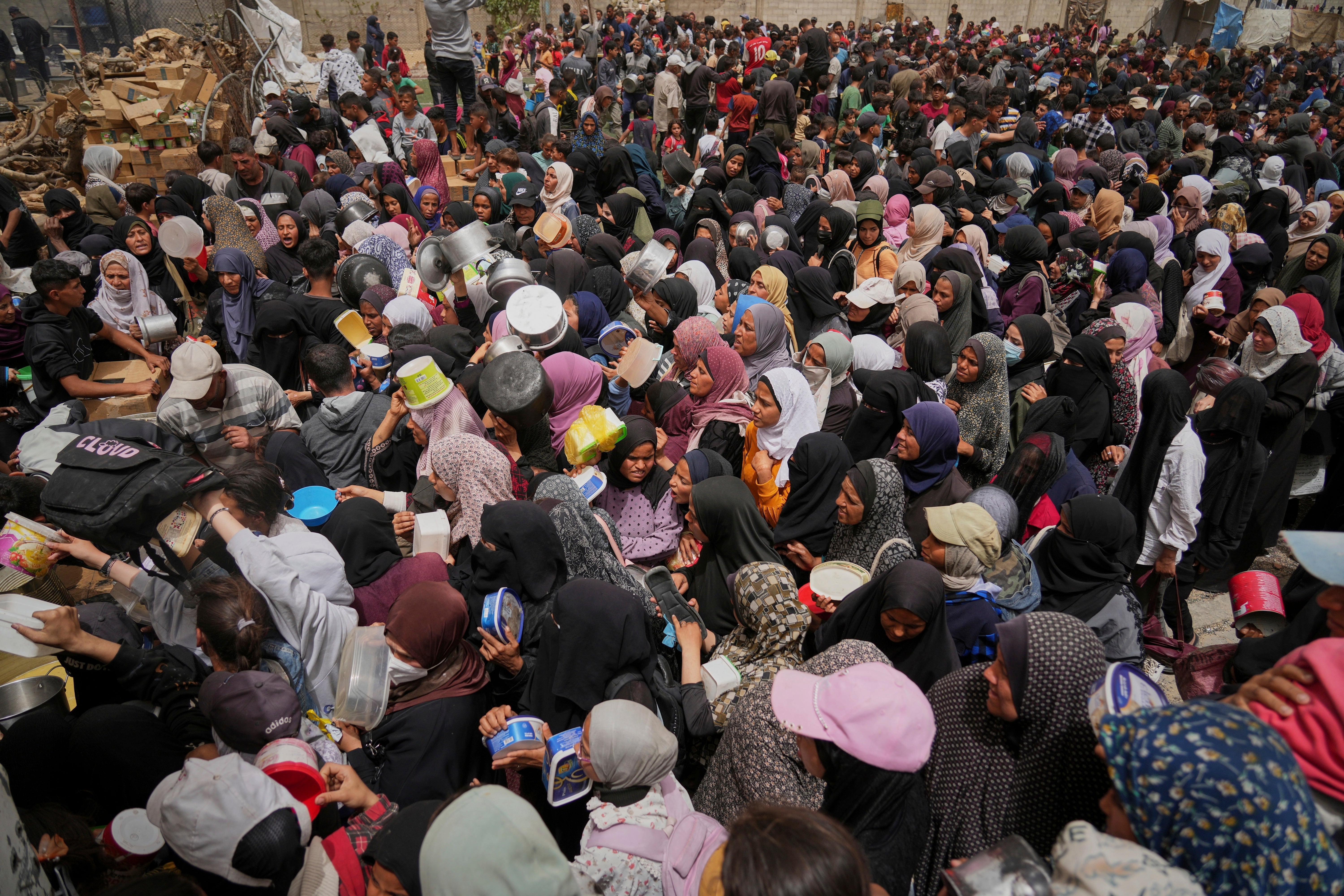ARTICLE AD BOX
The conditions that families in Gaza are being forced to endure are beyond what any of us could imagine in our worst nightmares, and the world has greeted that unprecedented suffering with a shrug.
Famine is stalking the population after Israel decided two months ago not to allow any aid into the besieged blasted Strip, which is just 42km long and home to 2.3 million people.
Now, that bloody reality is only going to become more apocalyptic if Israel goes ahead with plans to dramatically expand its operations, as Israeli officials have said today.
Security Cabinet Minister Zeev Elkin told Israeli public broadcaster Kan that the plan (which many warned was always the goal) is to move from raid-based operations to occupation and sustained Israeli presence in Gaza—territories they will hold until Hamas is defeated or agrees to disarm and leave Gaza.
Israeli officials also said that the newly approved offensive plan would move Gaza’s civilian population southward.
This can only result in yet more unimaginable suffering for civilians in the Strip, who have had to endure 19 months of intense bombardment and slaughter, mass and repeated displacement, and starvation.
It can only result in more danger to the 59 Israeli hostages and captives who remain in the hands of Hamas militant group in the Strip and under the same bombardment and blockade, whose loved ones are so desperate to have them home.

And it will only derail any hopes of a diplomatic, long-term, peaceful, and sustainable resolution to this conflict, which is surely among the bloodiest stains on our generation.
I speak to civilians in Gaza every day. They tell me children are starving to death. Right now, a kilo of sugar costs $30—a 25kg bag of rotten flour costs $300—that’s if you can find either.
One father-of-four told me some prices were, in some cases, 20 times higher than they were before the war.
Mothers cannot breastfeed because they cannot produce milk, as they are so malnourished—and so babies are dying. Videos taken in the Strip and shared online show terrifyingly malnourished toddlers—just skin stretched over bones.
UNICEF, the UN’s child agency, said it has resulted in at least 9,000 children being admitted for treatment of acute malnutrition since the beginning of the year.
Amnesty International said the blockade constitutes “genocide in action”—because blocking the entry of supplies critical for the survival of the population is part of a “policy of deliberately imposing conditions of life on Palestinians in Gaza calculated to bring about their physical destruction.”
Meanwhile in Israel, the largest group representing the families of the hostages sounded the alarm about this new plan, imploring the government to “prioritise the hostages. Secure a deal. Bring them home—before it’s too late.”

“The expansion of military operations puts every hostage at grave risk,” they wrote. “For 59 families, there is no victory without the return of their loved ones, the living and the deceased. There is no end to this conflict without them home.”
The only way out of this nightmare is a ceasefire, allowing unfettered entry of aid to Gaza, and through that thorough negotiations for a long-term, sustainable peace deal—so that families in Gaza can begin the long journey of recovery and rehabilitation, and so that the hostages can be released and returned home to their loved ones.
As one family member of a person killed in Hamas’s slaughter on 7 October told me: violence begets violence.
An even more bloody offensive in Gaza will only bring more bloodshed, more suffering in Gaza for both civilians and the Israelis held captive, less security for Israelis generally.
It will snuff out any glimmer of hope for a peaceful future in the region. So much is at stake. So far, the international community has been deafeningly silent. That must change.


-2025-in-Phoenix-qvqmj6mg.jpeg?trim=0,0,0,0&width=1200&height=800&crop=1200:800)






 English (US) ·
English (US) ·